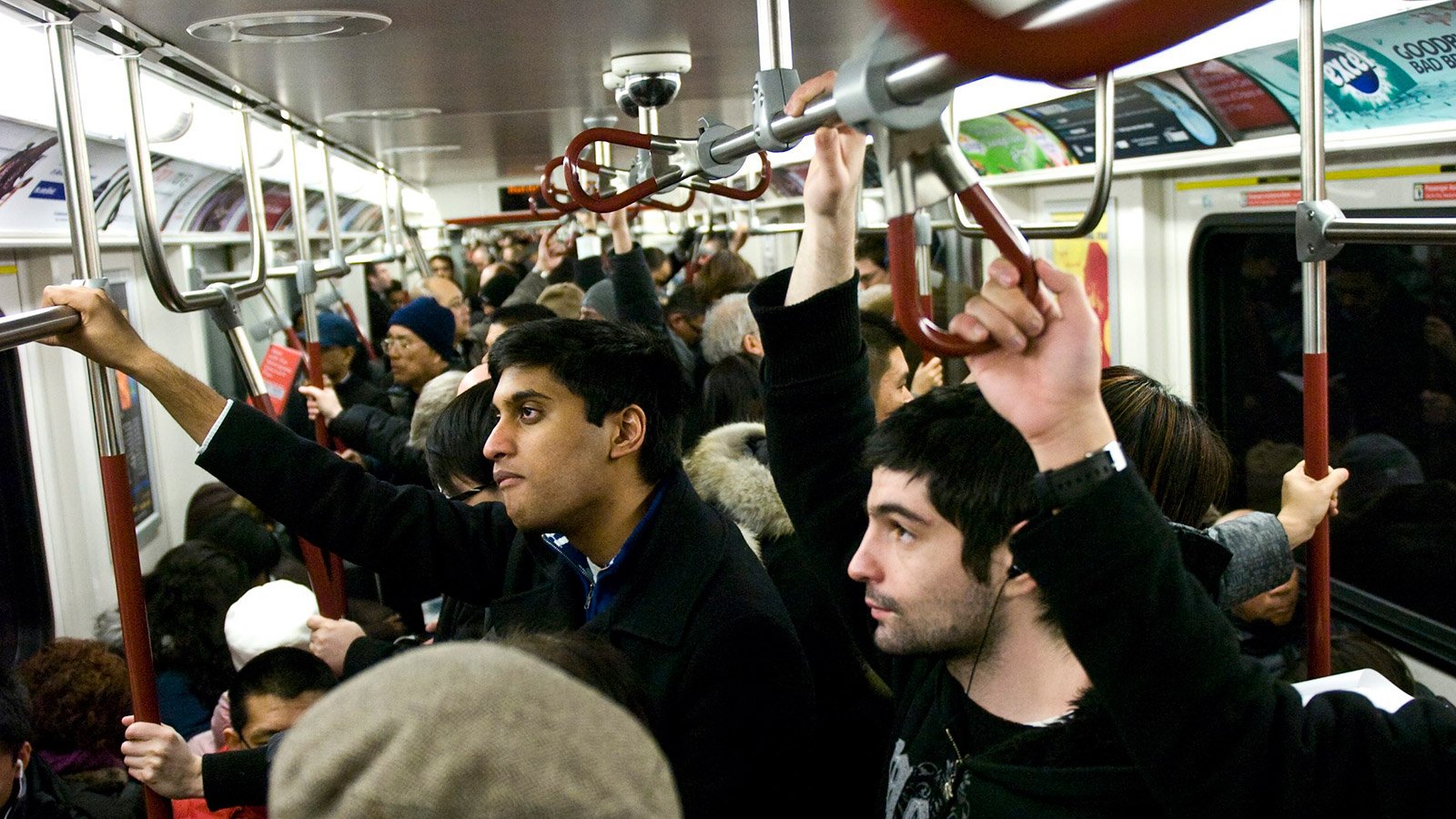A surprisingly cheery history of urban commuting
Ian Gately’s ‘Rush Hour’ on why we seem to love the commute every bit as much as we complain about it
Christian Lapid/CP
Share

RUSH HOUR: HOW 500 MILLION COMMUTERS SURVIVE THE DAILY JOURNEY TO WORK
Iain Gately
Commuting has a terrible reputation, and for good reason. As even this surprisingly sunny take on the history and current state of travelling between home and work admits, the London Tube allocates passengers 0.45 sq. m of space each, an allotment less than British law demands for a transported pig. The summertime temperature on trains, moreover, regularly exceeds the 30° C mark set for livestock. In short, commuters in Britain, who are far from having to cope with the worst conditions in the world, are still treated worse than pigs. Small wonder that two-thirds of them prefer the larger personal space permitted by cars, even though they cost much more and frequently leave drivers mired in gridlock.
Yet humans seem to love the commute every bit as much as we complain about it. From the very beginning, British trains—which the earliest developers thought would primarily move goods—were besieged by would-be passengers. Many of those users wanted to escape dangerous and unsanitary cities—aside from the kind of pollution still prevalent today, consider an 1898 New York report that estimated that the city’s horses produced 2.5 million tons of manure annually—and were willing to embrace dangerous and unsanitary ways of doing so. Fatal crashes, with mass casualties, were far from uncommon, and everyone tended to emerge filthy from coal soot.
But the world has adjusted, as Gately points out—from Toronto bedroom-community motorists on their two-hour drives, to Tokyo subway riders literally crammed into subway cars by white-gloved professional crammers. (All around the world mass transit users conform to the template established at the beginning: class-conscious Victorians, terrified they might accidentally make acquaintances of social inferiors, rapidly learned to avoid eye contact and ignore their fellow passengers.) Just as well, too, partly because telecommuting, “a good idea that doesn’t work,” appeals neither to bosses who like their minions at hand—none seem to oppose telecommuting more than the tech giants whose innovations make it possible—nor to workers who crave the social and intellectual stimulus of their fellows. And then there is the fact that real estate in cities, where the work remains, is too expensive for many of the workers.
Finding the positive in all this, as Gately does in an otherwise lucid and entertaining account, is no easy task, and he accomplishes it mainly by praising the automobile. Commuting, he writes, offers “freedom of movement,” as though the means were the same as the end, and the freedom in any way equated to the movement.